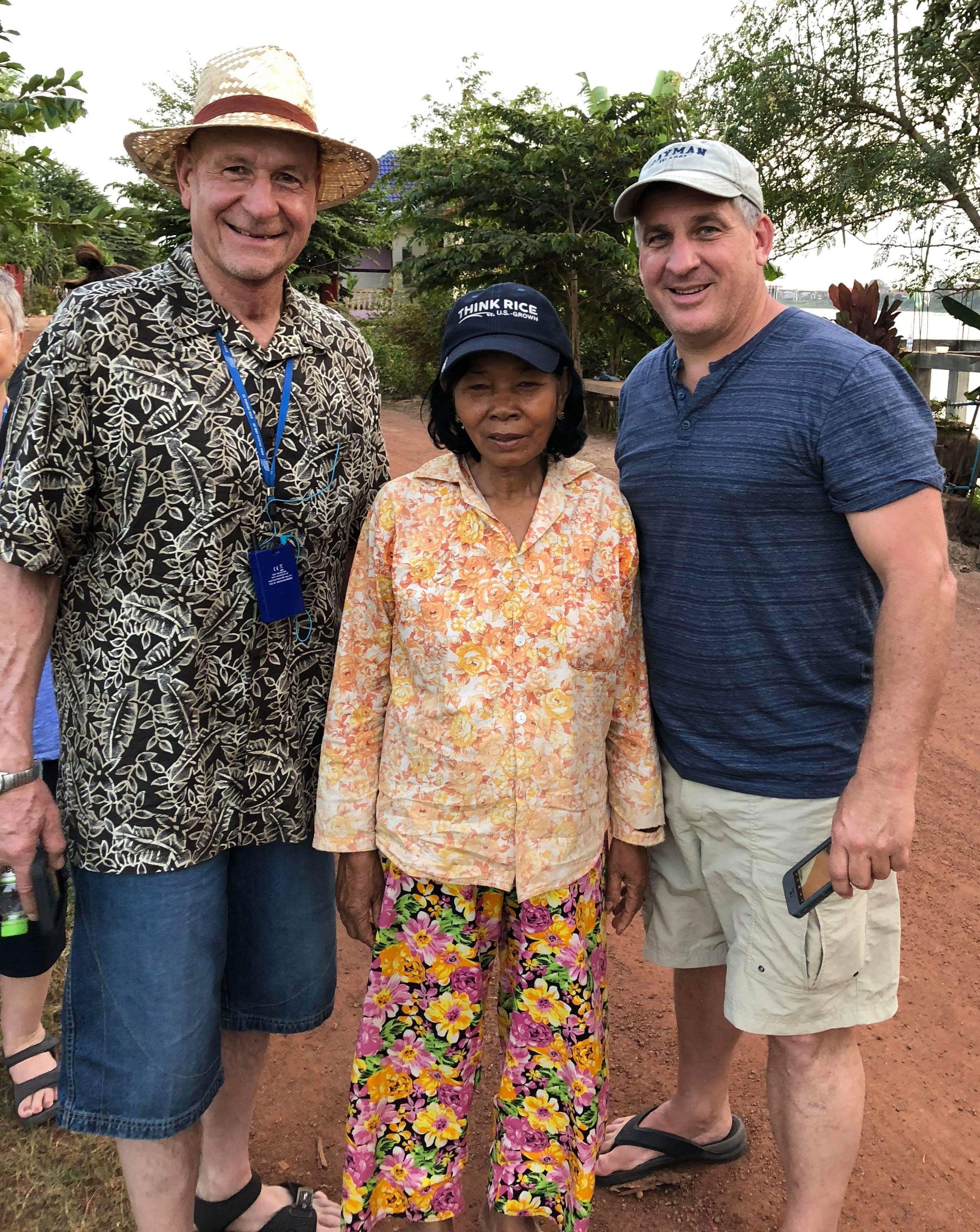 Arkansas rice farmer Robert Petter (far left) on a recent trip to Southeast Asia
Arkansas rice farmer Robert Petter (far left) on a recent trip to Southeast Asia
Jan 12, 2018
DEVALLS BLUFF, AR – My wife, Karen, and I are just back from a vacation, not a business trip, on a Mekong River cruise through Cambodia, plus a week in northern Viet Nam prior to the cruise and a few days in Ho Chi Minh City, post-cruise. As we were preparing to leave home a couple weeks ago, people here would ask about our vacation plans and when we told them where we were headed, everybody posed one of three questions: Are we going there on purpose? Are we crazy? And why?
When people in the United States hear ‘Southeast Asia,’ the first thought is of the Viet Nam War, also known as the Second Indochina War that occurred in Viet Nam, Laos, and Cambodia, and lasted twenty years, from 1955 to 1975. However, the local people we met on our trip had a very different sentiment. As they would explain, both countries are very proud of their history and culture, but the people in Southeast Asia feel that that war was only a few years out of thousands of years of their history.
Every individual we encountered had a story about how they were affected by the war but they would quickly point out that they are trying to recover and move forward. No one we met was angry or upset at the United States, and all said it was time to move on. Everyone we had contact with throughout our two and a half week trip was friendly, accepting, and happy, and at no time did we feel threatened or in any kind of danger.
As far as their rice, the Mekong Delta rice growing region is absolutely beautiful! The small paddy fields with various crops in different stages of maturity present a colorful, welcoming, pleasant picture. We did see numerous workers in the rice fields but, since we were traveling with other folks who aren’t U.S. rice farmers, I didn’t feel I could interrupt the trip to stop and visit with the local farmers as often as I would have liked.
At one point in Viet Nam, I was able to finally get my feet in a rice field where I met a local farm lady and we had a good time trying to talk to each other about her operation. Needless to say, communication was challenging, but I did show her video and pictures of our rice farming operation here in Arkansas and gave her a USA rice hat to repay her for her time and patience with me.
Most of the crops we saw were very clean, even, and looked really good. We also saw several fields being harvested, some with machinery, and others with hand-held sickles. From one end of Viet Nam to the other everyone dried their rice in the sun, either on or near the road, turning it several times for even drying. Most rice is shipped in small wooden barges that carry 200 tons.
In Cambodia, we had the opportunity to visit two schools. At the school in the village of Koh Chen, we gifted the students with left over USA Rice giveaway bags from years past. I had packed these out of date bags in my luggage to share with the students to use as book bags or for their parents to haul groceries. They were a huge success!
I also donated 1,000 Riceland Food pencils to the school. Our guide explained how valuable a pencil was to each family as it enabled their children to participate in class. The guide said one pencil was the equivalent of one chicken.
Learning how one simple pencil could change a child’s life made me realize just how much we, in our part of the world, take for granted. The rural areas we visited on this trip didn’t have any of the modern conveniences we can’t seem to live without. It gave me a real appreciation for how fortunate I am to live where I do, and, as a farmer, to have access to the latest equipment and technology that makes my job a lot easier than it would be using a sickle and a drying rake.